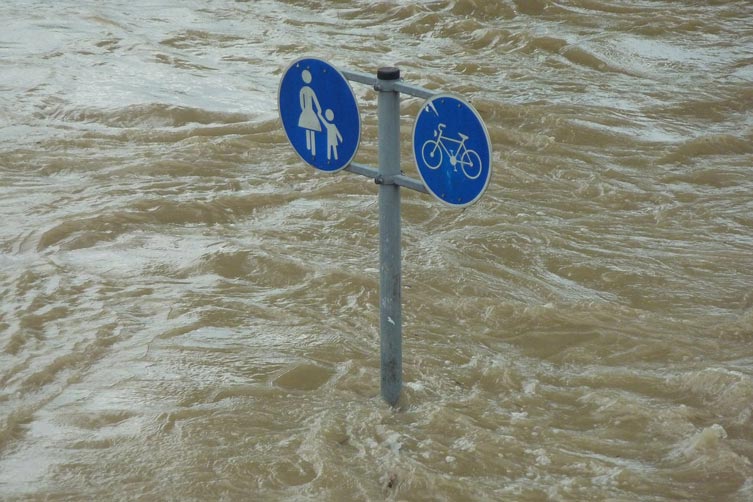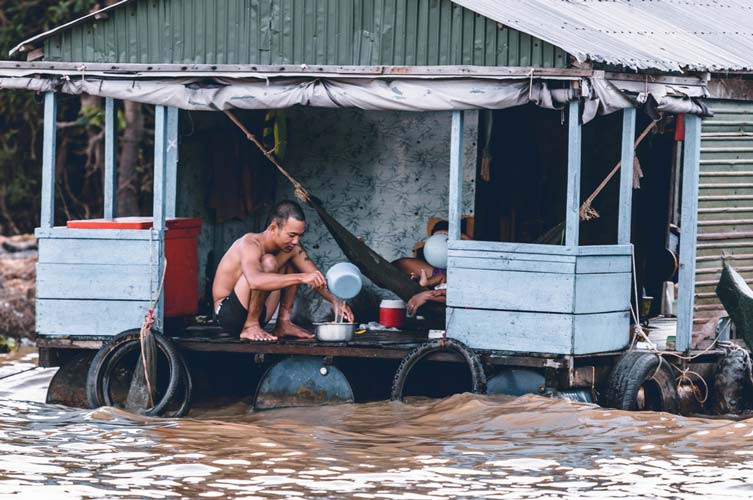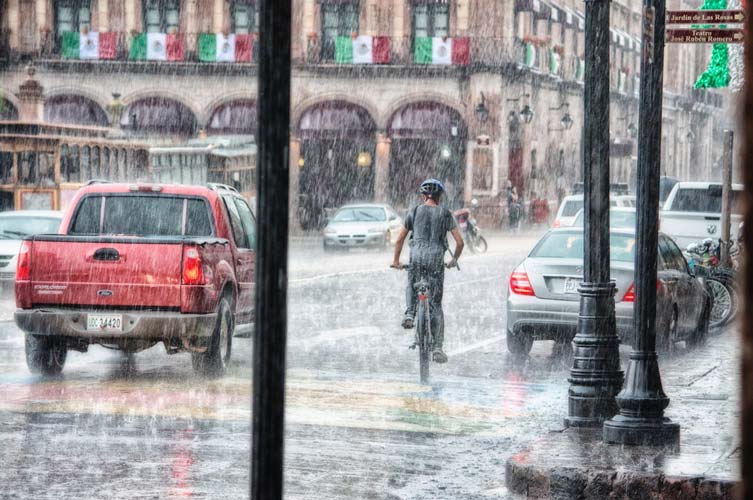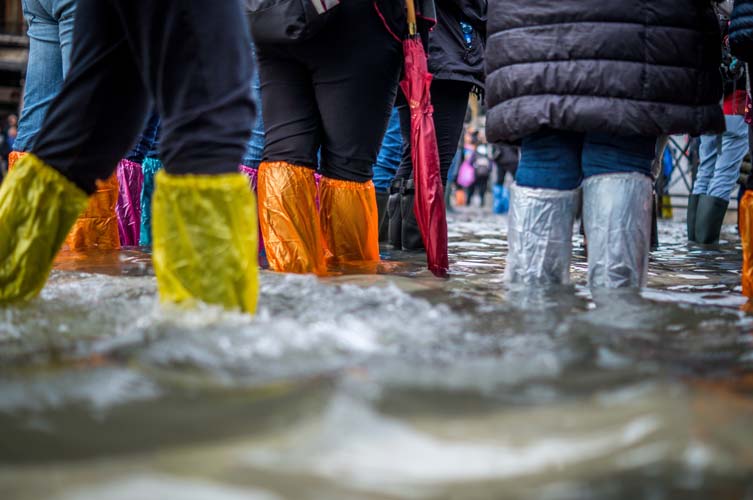A disaster can strike anytime anywhere to anybody. Cyclone Fani recently hit Eastern coast of India. The people of Odisha have suffered a lot in 1999 and again in 2019. We cannot predict any disaster, but we can definitely prepare for it with an Emergency – Disaster Preparedness Plan for your family.
Disaster Preparedness is a basic necessity of today’s time and if it can be included in a school curriculum or a mandatory course in college, it can help save many lives. We generally become alert when we see news on television or when we meet a friend who has survived a disaster. You can make a basic disaster preparedness plan and discuss it with your family.
Realization of Making a Disaster Preparedness Plan

Sandeep, who lives in Mumbai, was traveling in a bus and found that the bus driver has changed the regular route. The phones of the bus – passengers were ringing and everybody was getting the same question from the family – are you ok?
There was news of bomb blast near Sandeep’s office. That was the reason for the phone call and the bus driver changing the route. It was heavy traffic on the roads and local trains were jam-packed.
Due to the news, everybody wanted to reach back home at the earliest.
Sandeep reached back home safely and realized that he should make a disaster preparedness plan for himself.
Readying the Information to Make Disaster Preparedness Plan
#1 Personal Information
Sandeep lives with his brother, sister-in-law, cousin and niece.
| Name | Age | Specific Health Issues /Unique Needs |
| Self | 28 | Use glasses |
| Brother | 32 | Hand plastered a few days back, now fine |
| Sister-in-law | 31 | None |
| Cousin | 24 | None |
| Niece | 4 | Food and water |
#2 Geographic Location
Sandeep currently lives in Navi Mumbai. His apartment having 3 rooms is on the 4th floor of a concrete building. One of the room has a balcony with key-lock grills.
The building is equipped with 2 elevators and 1 stair. Rooms are airy with full-sunlight. The family has a car parked on the ground floor. There is no basement in the building. Water pipes for fire emergency are installed on each floor.
There is no access to the terrace. The front door of the building is of glass and can be locked. There are 2 emergency iron gates (locked usually) in the ground floor near the lift.
There is an open park opposite to road on the front side of the walled – building compound.
#3 Types of Disasters (Emergency)
The area is most likely prone to ‘floods’ due to heavy southwest monsoons which come every year in between June to August. The city has experienced floods in the past. The Mumbai flood of 26 July 2005 is known to all.
Other potential disasters can be:
- Sea level rise; Tsunami
- Storms
- Terrorism
- Fires
Since Sandeep lives on the 4th floor of the apartment. The plans of leaving the house at the time of a flood may be difficult in case they are required to leave the house.
There is a hillock at around a distance of 5 km from the house, which can be considered as a place to go. The park in front can be another location to move in case of any other disaster.
#4 Home Preparedness and Jump Kit – Disaster Preparedness Kit Checklists
Sandeep has made a Home Preparedness kit list and a Jump Kit checklist.
Home Preparedness Kit (Disaster Preparedness Kit)
Home Preparedness Kit (Disaster Preparedness Kit for home) will be kept at home and to be used in case you get stuck in your house and can’t go out.

It will include the following items –
- Water – Water supplies for 5 people at 5 liters per day. Water purification non-electric filter and Multiple utensils and bottles for storage.
- Food – Raw & ready to cook eatable meals. Packed chocolates. Emergency LPG cylinder to cook food and boil water whenever required at home.
- First-Aid Kit – Cotton, bandages, wipes, antiseptic solutions, glucose, emergency medicines for stomach, fever and cough and saline, antiseptic creams, mosquito repellant creams.
- Bedding – Mattresses and mats.
- Important Records – A single file containing important insurance details of life, health, car, and home insurance policies, health insurance hospital cards. Important certificates. Emergency contact list (5 in no. for each member).
- Money – Minimum amount required to replenish all the above-mentioned items and to go to another place for each family member (At least Rs. 5000 per person).
- Tools & Miscellaneous Items – Keys for all the doors, buckets for water storage, soap and cleaning material, dry clothes, notebook. Fire lightning material – matchstick, lighter. Knife, battery operated torch with spare batteries, candle, umbrella. Old newspapers/ paper. Hand sanitizer.
Jump Kit (Disaster Preparedness Kit)
Jump Kit (Disaster Preparedness Kit for outside home)will be kept at home and to be used in case the family needs to leave home for another place in a disaster emergency.
It will include the following items –
- Water – Water supplies for 5 people at 5 liters per day for 3 days. Water purification non-electric portable filter and Reusable bottles for storage.
- Food – Packed food, snacks and ready to cook food.
- First-Aid Kit – Cotton, bandages, wipes, antiseptic solutions, emergency medicines for stomach, fever and cough and saline, antiseptic creams, mosquito repellant creams.
- Important Records – Copies of important documents life, health, car, home insurance policies, health insurance hospital cards, Important certificates, home sale deed document. Emergency contact list (5 in no. for each member). Identity card with phone no. especially for the child.
- Money – Minimum amount required to replenish all the above-mentioned items and to go to another place for each family member (Rs. 5000 per person). All available credit and debit cards.
- Tools & Miscellaneous Items – Dry clothes. pocket notebook/ paper and pen for everybody, Matchstick / lighter. Knife, battery operated torch with spare batteries, candle, umbrella. Old newspapers/ paper. Hand sanitizer. Spare batteries for mobile phone. Multipurpose army knife set, waterproof bag. extra polybags.
Emergency – Disaster Preparedness Plan
#1 Contingency Plans
Disaster can occur anytime. Sometimes occur when you are at work and members of your family are at work or school.
Yes, Sandeep can leave unless the office workplace itself is not surrounded by disaster and not allowed to move out. The office place is far off from home.
So, he would try to contact family members if somebody can pick his niece from the school as the offices of other family members are nearby home.
The local meeting place will be the nearby hillock entry gate which is near to the family’s office and is on the way from my office to home.
Out of the city, we can meet at the nearest hill station Lonavala by-pass road. Its a 1.5 hours drive from my home.
#2 Escape Routes or Transportation Plan

| Meeting Spots | Distance | Method of transportation |
| Primary – Home | 40 km | Local transport – train, bus. Secondary – Cab |
| Secondary – Lonavla | 100 km | Local transport – train, bus. Secondary – Cab |
| Tertiary – Ahmedabad, Gujarat | 500 km | Relatives house. Car with a full tank. extra containers for Petrol. Money in case of directly leaving from the office and to go by bus/ train |
In any disaster, Sandeep has to use a train or take a cab to reach home. Last option is to walk down. From home, the same transportation materials to be used.
The difference is only Terrorism, where you have to keep an eye on what’s going on all around to go to any new place and choosing any transportation method.
#3 Emergency Communication Plan
Each family member has a cellular phone. The niece has a phone in school. The most important is to pick her up from there by any family member. Sandeep will have to continuously send messages, phone calls, and e-mails through the phone.
However, overuse will be avoided based on the battery on the phone. They’ll have to decide at a meeting point during phone calls.
To receive communication from authorities is easy as the population size of the city is very high and one or the other communication reaches everybody by word of mouth.
Further, there are emergency loudspeakers installed at various locations which will be used by authorities for announcements.
In the case of cell phones not working, they can register our names wherever there is any government department has organized camps. Further, they can use wired landline phones, wherever available.
#4 Maintenance Approach
Sandeep can discuss this with his family and improve the preparedness plan. They can discuss and jointly make the jump-kits and home preparation kits so that everybody is aware that what materials are kept in the kits.
They should also make a list of items which will require replacement every month and include in the monthly buying list.
Water and food should be reviewed every week and item which is going to expiry to be consumed immediately with the replacement of the new item.
The family can also float an emergency contact list to their parents living in another city which they can refer to in case of an emergency.
Wrapping It Up
It’s true that this plan is based on one of the scenarios. You can refer this and make your own Disaster Preparedness Plan for your family and your place of stay.
One can also explore the guide provided by the National Disaster Management Authority – GoI [1] and The American Red Cross [2] for more details. You can also share your feedback if you wish to add any points in the above article.
Future planning for finances is equally important. Read our article on Financial Planning.




